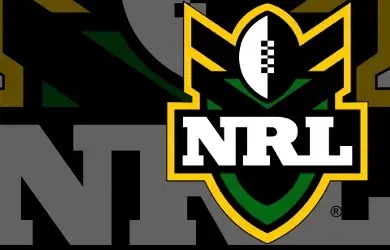Should the shoulder charge be banned

There has been some talk this week about whether or not the NRL should consider banning the shoulder charge. Greg Inglis was the most recent high profile player to front the judiciary after his illegal hit on Dean Young over the weekend.
Purists will cry bloody murder if the NRL ever did ban shoulder charges. But an average sized person is capable of causing real damage with a mis-timed shoulder charge, so it’s not hard to imagine what today’s professional rugby league player might be capable of.
It’s fair to say that even the smallest NRL players are above average strength and power. Many of the outside backs such as Inglis are often the biggest players on the field. The Warriors giant winger Manu Vatuvei dwarfs his entire forward pack. The modern game is a great physical battle between some of the strongest athletes in contact sports, but it’s obvious that the consequences of a poorly executed big hit are going to be a lot worse as well.
Shoulder charges are harder to pull off than conventional tackles. In order to pull it off, the defender needs to be standing almost upright. This leaves little room for error, with the contact point being very close to the chin and face of the ball carrier. In some cases, like that of Inglis, the tackler will leap into the hit. This removes any room for error, especially for taller players (like Inglis). If the attacking player trips, falls or turns even slightly the likelihood for a dangerous tackle sky rockets.
There’s plenty of evidence and clear cut reasons for making the shoulder charge illegal. And to be honest it wouldn’t change the game much, if at all.
But there must be some responsibility placed on the defending player. Whether a tackle is dangerous or not isn’t something we all need to learn or be taught. It’s obvious. For some it’s an effective and safe tactic. James Maloney, and Chris Sandow will often use it to bring down opposition players. And it can be an excellent weapon for taking away an opposition sides momentum when used properly, a la Ben Matalino.
To be fair, and to keep the game as a genuine physical contest, while managing player safety, the NRL should trust in their judiciary system and base every reported incident on their merits. The process works well, and players understand it. Changing the rules will simply make the tackle even messier to referee. Hard tackles will often look like shoulder charges if the player being tackled bounces off the defender before he can bring his arms into the movement.
At grass roots levels, there’s probably no safe guidelines that allow for improper technique. It shouldn’t be something we teach our kids to do. Teaching them the fundamentals of good orthodox tackling, are the same principles that will lead to being able to tackle with a shoulder charge later in life, should they reach the top level.
It’s good to see the NRL and players back their disciplinary process. Part of the attraction of league is the brutality. It’s the toughest sport there is, so there are always going to be accidents as much as some people like to think otherwise. Looking at the penalties and suspensions over the last few seasons, it seems that lifting players past horizontal is still an area that needs work. The same principles apply for both situations. If the player keeps his center of gravity down, and doesn’t stand up in the act of tackling, it becomes very difficult to put the ball carrier in a dangerous position, or make contact too high on the body.
So it comes back to the basics. Learning and practicing how to tackle well. Which is all in the hands of the players, coaches and clubs where it should be. It doesn’t have to involve the the NRL committee any more than it already does. After all, they have plenty to deal with as it is.